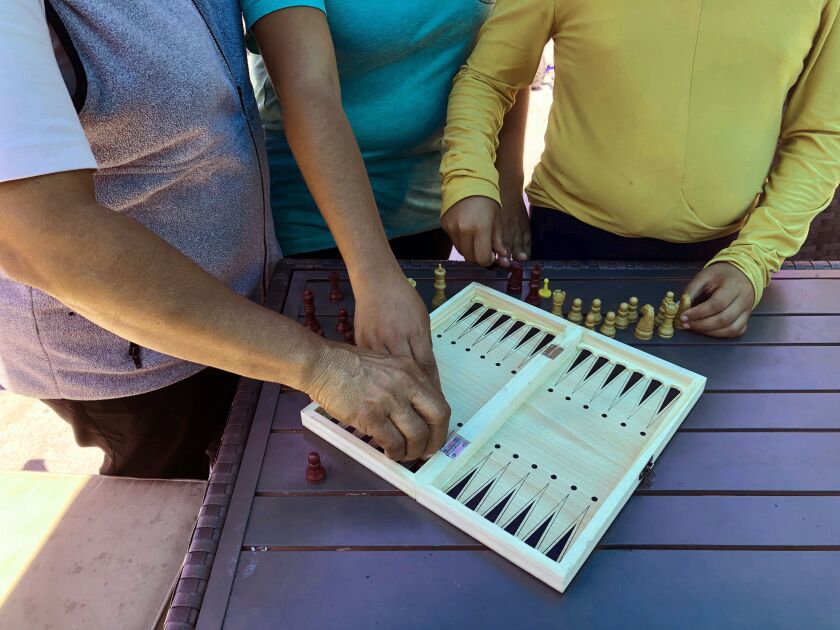A new and detailed snapshot of the recent surge of asylum-seeking families on the Mexican border gives a sense of how they were treated after entering the U.S. and where they settled.
Houston was the destination for 432 of 7,358 families who were briefly housed in a San Diego shelter from late October through June.
That was 100 more than the second-most popular spot, Los Angeles, and reflects Houston’s emergence as a primary gateway for immigrants, including many Central Americans.
In another reflection of shifting demographics, Chicago — long a draw for Mexican immigrants — was the destination for only 76 families. Chicago ranked 21st, with less than half the number of families headed to Nashville, Tennessee, and barely more than Fort Myers, Florida.
The details about the migrants’ destinations were extrapolated for The Associated Press from a survey of shelter migrant registration forms compiled by Tom K. Wong, an associate political science professor at the University of California, San Diego.
A report on the survey was made public in recent days, focusing on custody conditions and demographic characteristics of the asylum-seekers who stayed at the shelter affiliated with the San Diego Rapid Response Network, a coalition of lawyers, advocates and civic groups.
From October to June, U.S. authorities arrested or stopped nearly 800,000 people, making the snapshot of more than 17,100 adults and children who passed through San Diego a partial but still significant view of a surge that overwhelmed authorities and led to migrants being held in sometimes-squalid conditions.
Dumas, a town of 15,000 people in the Texas Panhandle that’s half Latino and has a large meatpacking plant nearby, was the destination for 56 families — more than Denver, Phoenix or Seattle.
Other small cities that drew large numbers include Huntsville and Gadsden in Alabama and Chattanooga, Tennessee.
The coalition opened its shelter in late October, when U.S. authorities began releasing asylum-seeking families before they could arrange travel. Families were released with ankle monitors for heads of household and notices to report to authorities in destination cities while their cases wind through bottlenecked federal immigration courts.
Among San Diego asylum-seeking families, 31% reported problems with U.S. custody conditions, according the study by Wong’s U.S. Immigration Policy Center. Families were held an average of 3.4 days.
The most common complaints were about food and water, including insufficient infant formula, spoiled food and dirty water.
Others reported issues with hygiene, including not having a toothbrush or toothpaste and lack of showers.
Nearly half who complained had issues related to sleep, overcrowding and confinement and cold temperatures.
The study found that one of five heads of households had a primary language other than Spanish, yet nearly 90% of them were given legal instructions in Spanish. Other common languages include the Mayan dialects of K’iche’, Q’eqchi and Mam, Vietnamese and Creole.
Guatemalans accounted for 48% of families served in San Diego, Hondurans made up 30%, El Salvadorans 8% and Haitians 5%.
“These findings raise serious due-process concerns,” said Kate Clark, director of immigration services at Jewish Family Service of San Diego. “If asylum-seeking families are not being given vital instructions about their immigration proceedings in a language they can read or understand, how can we expect them to navigate an already complex legal process that is increasingly stacked against them?”
U.S. Customs and Border Protection said that it provides the migrants three meals daily, drinks, unlimited snacks and hygiene products. Border Patrol chief Carla Provost said last month that stations weren’t designed for long-term custody and were occupied at “unprecedented and unsustainable” levels.
Customs and Border Protection, the Border Patrol’s parent agency, contracts for translation services when officers can’t determine migrants’ primary languages, said Ralph DeSio, a spokesman in San Diego.






